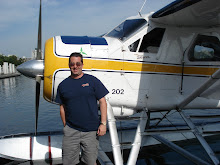


T.o.m. Sopwith
Thomas Octave Murdoch Sopwith was born in Kensington, London. He was the eighth child and only son of Thomas Sopwith, a civil engineer. He was educated at Cottesmore School in Hove and at Seafield Park engineering college in Hill Head.
When he was ten years old, whilst on a family holiday on the Isle of Lismore, near Oban in Scotland, a gun lying across young Thomas's knee went off, killing his father. This accident haunted Sopwith for the rest of his life.
In his youth, he was an expert ice skater and played in goal during Princes Ice Hockey Club's 1908 match with C. P. P. Paris and during the 1909–10 season.He also played on the Great Britain national ice hockey team which won the gold medal at the first ever European Championships in 1910.
Sopwith became interested in flying after seeing John Moisant flying the first cross-Channel passenger flight. His first flight was with Gustave Blondeau in a Farman at Brooklands. He soon taught himself to fly on a British Avis monoplane and took to the air on his own for the first time on 22 October 1910. Unfortunately he crashed after travelling about 300 yards (275 m). He soon improved and on 22 November was awarded Royal Aero Club Aviation Certificate No. 31.
On 18 December 1910, Sopwith won a £4,000 prize for the longest flight from England to the Continent in a British built aeroplane. He flew 169 miles (272 km) in 3 hours 40 minutes. He used the winnings to set up the Sopwith School of Flying at Brooklands.
In June 1912 Sopwith with Fred Sigrist and others set up The Sopwith Aviation Company. The company produced more than 18,000 British World War I aircraft for the allied forces, including 5,747 of the famous Sopwith Camel single-seat fighter. Sopwith was awarded the CBE in 1918.
Bankrupted after the war by the punitive anti-profiteering taxes, he re-entered the business a few years later with a new firm named after his chief engineer and test pilot, Harry Hawker. Sopwith was chairman of the new firm, Hawker Aircraft.
After the nationalization of what was by then Hawker Siddeley, he continued to work as a consultant as late as 1980.He became a Knight Bachelor in 1953.
His 100th birthday was marked by a flypast of military aircraft over his home. He died in Hampshire on 27 January 1989, aged 101.
